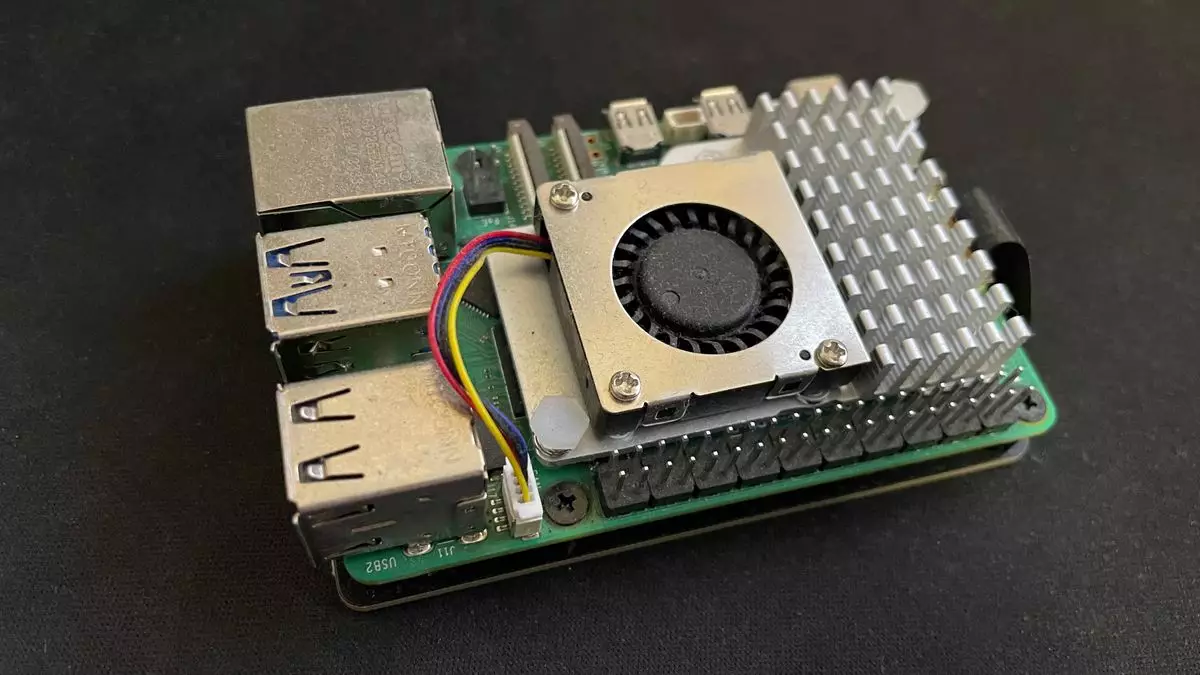The Raspberry Pi series has long been celebrated for its versatility, affordability, and extensive community support, but the launch of the Raspberry Pi 5 in 2023 marked a turning point that many enthusiasts were eagerly anticipating. One of the standout features of this latest iteration was the addition of PCIe support, allowing users to connect various peripheral devices, most notably Solid State Drives (SSDs). This shift opened up new possibilities for users looking to enhance the performance of their Raspberry Pi experience.
When the Raspberry Pi 5 was released, the initial excitement stemmed not just from its improved specifications over its predecessor, the Raspberry Pi 4, but also from its enhanced capability to function as a desktop computer. With an emphasis on multitasking and performance, the Raspberry Pi 5 was the first in the series that could realistically support everyday computing tasks with a level of efficiency that had previously been out of reach. Notably, with the ability to connect SSDs, this small form-factor computer could handle gaming and other resource-intensive applications more adeptly than before.
However, upon its initial release, the lack of official SSD solutions led to some frustration within the community. Although third-party adaptations were available, they often involved complex setups requiring compatible components that weren’t always easy to source. This hindered the urge for Raspberry Pi aficionados eager to explore the board’s gaming capabilities.
In a promising development, Raspberry Pi Ltd recently announced official SSD offerings that pair seamlessly with their electronics. The launch included the highly anticipated M.2 HAT+, a coveted add-on that facilitates SSD connectivity. This accessory, in conjunction with the official SSD kits, finally provides users with an out-of-the-box solution that eliminates the guesswork once involved in assembling a Raspberry Pi-based gaming setup. This newfound simplicity means that even those with minimal technical expertise can enhance their Raspberry Pi experience substantially.
This move is particularly significant for those who wish to push the boundaries of what the Raspberry Pi can do. The official SSDs are compatible with PCIe 3.0, allowing for faster data transfer rates—albeit with careful configuration. By adjusting a few settings in the Pi’s configuration file, users can unlock these speeds. This flexibility allows more advanced users to experiment further and maximize their device’s potential.
In practical terms, the addition of an SSD to the Raspberry Pi 5 is a game-changer for gaming enthusiasts. The reliance on MicroSD cards, while traditional for previous versions, quickly reveals its limitations in speed and storage reliability. Even high-performance MicroSD cards cannot compete with the data stability and read/write speeds of SSDs. In my own experimentation, using a combination of third-party hardware revealed that gaming on a Raspberry Pi 5 powered by an SSD not only improved load times but also offered a more reliable platform for extensive gaming sessions.
Running classic games or more recent titles like Doom 3 on the Raspberry Pi 5 showcased the impressive capabilities of the board when paired with an SSD. While it may not rival high-end gaming rigs, it still allows users to indulge in various gaming genres while enjoying a solid experience. Furthermore, the Raspberry Pi community has been buzzing with innovative projects, such as using external GPUs paired with the Raspberry Pi for enhanced graphical performance, further expanding its potential as a gaming console.
Some users have also begun to explore niche applications, such as retro gaming through platforms like RetroPie or Recalbox. Housing SSDs can significantly enhance the responsiveness and performance of these emulation systems, making the Raspberry Pi a compelling option for nostalgia-driven gaming experiences.
The introduction of official SSD solutions for the Raspberry Pi 5 signals a pivotal step in the evolution of this beloved single-board computer. As enhancements in performance continue to emerge, enthusiasts and developers alike can delve deeper into both gaming and creative projects. With the combined power of PCIe support and SSD capabilities, the Raspberry Pi is not just an educational tool—it’s becoming a legitimate competitor in the desktop and gaming markets.
For users who value flexibility, affordability, and a robust community, the Raspberry Pi 5 has cemented its place as a resourceful platform that fosters innovation and imagination. As more developers harness its potential, the possibilities seem endless, and the future of Raspberry Pi gaming looks more promising than ever.


Leave a Reply